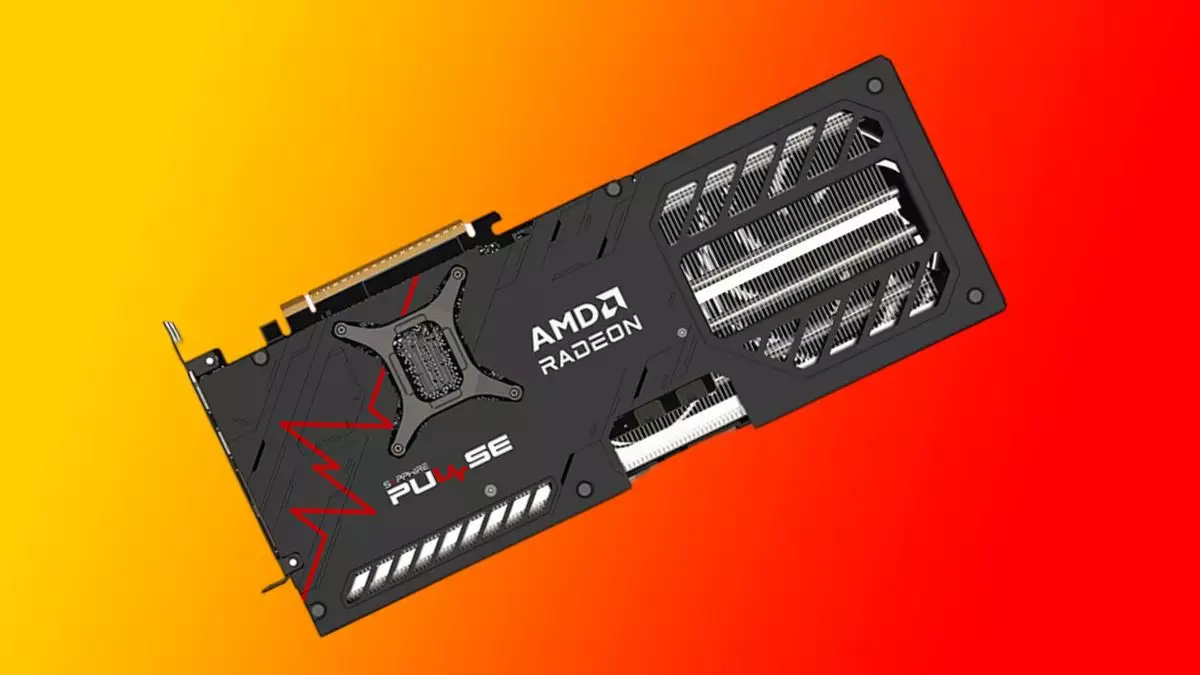The AMD Radeon RX 9070 series has recently set the gaming world on fire, offering robust performance for both casual and hardcore gamers. While the excitement surrounding this hardware is palpable, potential users must be cautious about installation nuances that could undermine their experience. With the RX 9070 XT and non-XT variants becoming increasingly popular, understanding their specifications, features, and crucial installation tips is vital to harnessing their full potential.
The Foam Issue: A Hidden Danger
An intriguing yet worrisome revelation has surfaced about the Sapphire variants of the Radeon RX 9070 series, including the Pure Radeon and Pulse Gaming models. Upon unboxing your new graphics card, you may encounter protective foam nestled inconspicuously between the shroud and the heatsink fins. This cushioning is primarily intended for shipping protection, safeguarding the delicate components against damage during transit. However, if this foam is overlooked during setup, it can significantly impair the cooling performance of your graphics card, potentially leading to overheating or failure.
Sapphire Japan has issued a communication through social media channels to users, stressing the importance of removing this cushioning material before installation. The warning is clear: failure to do so may lead to diminished cooling efficiency, which is a critical concern for gamers who demand high performance during intense sessions.
A Simple Step to Secure Performance
For those who may initially be put off by the idea of inspecting their hardware, let’s put things into perspective. Removing the foam may seem like an inconvenient chore, but it is a small price to pay for optimal performance. Considering the cost of these graphics cards and the functions they perform, the importance of proper installation cannot be overstated.
Sapphire and Ask Corporation have provided detailed guidance to help you in this regard. You’re advised to gently extract the cushioning without using sharp tools that could potentially mar the surface of your card. With a careful approach, the foamy impediment can easily be eliminated.
Moreover, Sapphire has reassured users regarding warranty conditions if the sticker on the product is removed in the process. This transparency helps dissolve anxiety surrounding warranty issues during installation—a common concern among users spending considerable investment on high-performance hardware.
Identifying Protective Materials: Not All Foams Are Alike
Interestingly, this isn’t the only foam found in Sapphire graphics cards. Another variant is glued directly onto the heatsink of the NITRO+ models, serving a different purpose—protecting cables rather than cooling mechanisms. Hence, users must take the time to familiarize themselves with their specific model to avoid unnecessary removals that might compromise its integrity.
The presence of multiple cushion types raises an important point about consumer vigilance. Owners should double-check their installation to ensure all unnecessary materials are cleared while preserving essential protective layers. This duality between protection and performance can sometimes create confusion—paying attention to product details is critical in today’s complex tech landscape.
Elevating Your Gaming Experience: The Small Steps Matter
A recurring theme discussed in the gaming community is that every small step can significantly impact overall performance and longevity. Whether you’re a seasoned gamer or someone new to the world of PC building, taking the time to inspect and properly set up your hardware may determine your experience.
The Radeon RX 9070 series stands at the forefront of gaming technology, promising unprecedented performance capabilities. By being proactive and following manufacturer guidelines, including the seemingly mundane task of checking for installation hazards like foam, you are not just securing your investment—you are enhancing your gaming experience and paving the way for future upgrades.
Engaging with community insights and sharing knowledge about these installation nuances fosters a more informed user base. As technology continues to advance, the potential learning curve can be steep, but collaboration and transparency can help flatten it for the next generation of gamers. Thus, vigilance today can save headaches tomorrow, making it an essential practice for anyone diving into the realm of performance PC gaming.

